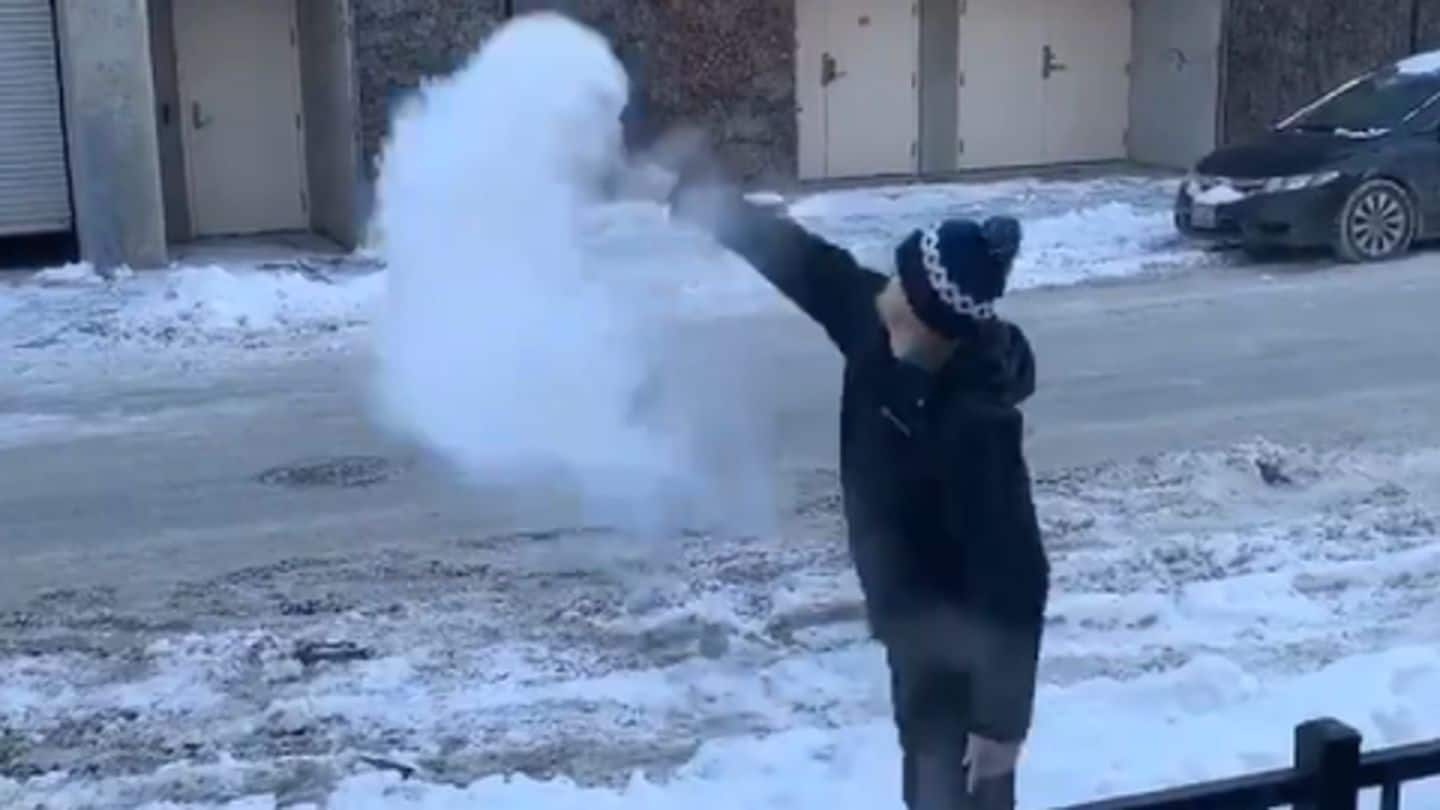
Watch: Boiling water freezes in air in Midwest US
What's the story
If you are irritated with Delhi winters, then take a look at the US where people are throwing boiling water in the air to see it freeze. And you'd stop complaining. A phenomenon called polar vortex has brought down the temperature in Midwest US to the effect that officials had to set fire on train tracks to keep it free from ice. Woah!
Weather
Temperature drops to -29 degree Celsius in Midwest US
The temperature in Midwest US has plummeted to around -29 degree Celsius forcing citizens to remain indoors. However, this hasn't dampened their spirits and they seem to have found fun ways to kill boredom. Twitter is getting flooded with videos of people in Chicago (one of the worst-hit areas) throwing boiling water in the air to watch it freeze, accompanied by the hashtag #Chiberia.
Twitter Post
'Boiling water freezes before it hits the ground'
Boiling water freezes before it hits the ground. -22/-49 windchill in Chicago. #Chicago #Jaden #chiberia pic.twitter.com/UPYVjloGBk
— clay carroll (@Clay_Carroll) January 30, 2019
Twitter Post
One with the water gun!
Boiling water droplets quickly freezing into ice crystals. -19 degree fun. Caution: boiling water will burn if not careful. pic.twitter.com/hJ3doP48nn
— Finley Math (@FinleyMath) January 30, 2019
Information
Act will cause burns if not done right
Although the act, a phenomenon known as the Mpemba effect, looks pretty spectacular, it comes with side effects. People are sharing videos on Twitter showing how the challenge went wrong with many and instead of frosty vapors, people ended up with burns and blisters.
Twitter Post
Challenge gone wrong
Boiling water gone BAD in #Chiberia pic.twitter.com/mSNHs0P9Sv
— CHRIS (@OHKAYCHRIS) January 30, 2019
Hair freezing
Separately, girl's hair in Iowa freezes as she stands outside
Among the hardest-hit parts of the Midwest lies Iowa state. Another video showing effects of the polar vortex has gone viral on Twitter in which hair of a teenage girl from Iowa froze as she stood outside her house. The hair can be seen sticking up straight from her head, defying gravity and it slowly starts falling forward as the girl enters her house.
Twitter Post
Cold defying laws of Physics!
“Is Iowa really THAT cold?” pic.twitter.com/htxSZzy2QB
— Taylor Scallon (@taylor_scallon) January 31, 2019
Phenomenon
But, what is polar vortex?
According to Mark Chenard, National Weather Service meteorologist, polar vortex is "the upper-level jet stream which circulates around both the North and South Poles, thus keeping the coldest air there." He added that when that jet stream sometimes buckles and weakens, there's a disruption in weather patterns causing warmer air to flow in Alaska and cold winds to US Midwest and East Coast.
Sudden change
Now, forecasters say weather will turn into spring-like next week
The bone-chilling cold has so far taken at least 24 lives in the region. However, according to forecasters, the cold is expected to convert into spring-like weather by the beginning of next week. Also, temperatures in some regions may rise to around 26 degree Celsius. But, experts say the rapid thaw might cause problems like bursting pipes, crumbling roads, and flooding rivers.